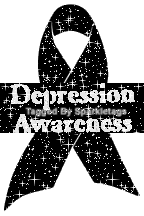Ivan changed the landscape four weeks ago, taking homes and lives but leaving an area filled with hope
October 14, 2004
Troy Moon
@PensacolaNewsJournal.com
Summer slipped out of town weeks ago, but most of us didn’t notice. It was hard enough to keep track of the days, much less the passing of seasons, as we waddled around in the dark in the wake of Hurricane Ivan.
A community,
four weeks later
Use the drop-down menu to read related stories.
But the lights are on again in the Pensacola Bay Area. Most of us now have vacated our candlelit porches for the familiar hum of air conditioning and “Seinfeld’’ reruns on TBS. The fortunate ones among us — those who only lost a tree here or a shingle there — are settling into a routine once more, going forward with our lucky lives.
Heather Minnich takes a break from cleaning her flooded Warrington home Wednesday while trying to get it ready for repairs after the interior was damaged by Hurricane Ivan. Minnich said she’sanxious to get the job done and get her two daughters back from Atlanta, where they evacuated to.
Photo by Ben Twingley@PensacolaNewsJournal.com
At worst, some of us only have that crazy, rules-free, post-Ivan traffic to gripe about. We’ll go on, albeit with minor inconveniences such as “limited’’ menus and giving up surfing for a few months.
But there are so many others whose lives won’t be rebuilt that easily. Sure, they’ve picked up the pieces — pieces are scattered everywhere and easy to find.
But putting the pieces back together?
How?
And how long is it going to take?
It’s been four weeks since Hurricane Ivan roared into the region in the early morning hours of Sept. 16, shattering homes, dreams and lives forever. The storm drowned people in their driveways and threw a tree upon the home of a 7-year-old girl, killing her.
Hurricane Ivan claimed the lives of 13 people in Escambia and Santa Rosa counties. And that’s not including the four members of a Molino family who died in a Mississippi plane crash trying to escape the storm. Or four Good Samaritans from the Pace Assembly of God who died when their airplane crashed shortly after takeoff. They were scouting the area to help in the relief effort.
Ivan shut down our schools for a month. It brought armed troops to our streets and thousands of kind souls to town from around the globe to give us ice, water and food, which were luxuries for the rich and the poor alike in the days immediately after Ivan.
It destroyed 6,100 homes in the two counties, sending droves of once-sturdy families into the ragged ranks of Pensacola’s homeless.
“About 25 percent of our congregation lost their homes completely,’’ said the Rev. Bob Bailey, pastor at Warrington United Methodist Church, home to 360 worshippers.
“It’s not going to be easy for anyone. We’ve tried to be with them and preach sermons that will deliver messages of hope, a message that there is a living God. ... Hopefully, in the future, we can be strengthened by this.’’
Bailey has but to open his eyes to see the obstacles facing so many. The steeple of his church has been sliced away. The pile of debris in front of the church is stacked so high it would serve well if the congregation ever decided to re-enact the Sermon on the Mount. There are 12 leaks in the church roof “that I know of,’’ Bailey said.
Every neighborhood near him is wrecked, from tree-strewn Star Lake and Navy Point to the chewed-up homes near Davenport Bayou just north of Pensacola Naval Air Station. Near the base, just off Navy Boulevard, debris lines roads as tightly and as long as a downtown parade crowd. There are tree limbs as thick as lumberjacks mixed in with relics of people’s lives — mattresses are browning in yards; once-beautiful oak furniture sits out like trash.
A mile away in Navy Point, Sonya Williams is raking leaves in her yard. Her home came out perfectly. Her next-door neighbor to the left sports a blue tarp on the roof but is staying put. Her neighbor to the right has a blue tarp, too. And broken windows. Williams said that neighbor might not come back.
“She’s old and staying with some family up in Alabama,’’ Williams said. “She was living by herself. The roof came in on her house and destroyed all her pictures of her children and a lot of her keepsakes. She was real depressed. She just told me she didn’t want to be alone now.’’
Does Williams know how lucky she is?
“Believe me, I know,’’ she said. “It could have been me who lost a house, too. I’ve got two kids. Before the storm, I didn’t really think too much about it. Now, I just think: What would I do if I lost my house? Where would we go?’’
While Williams can imagine the questions, so many others are asking themselves the same questions in earnest every single day.
Answers are hard to find.
For many, the aftermath is proving tougher than the storm, as homeowners wrestle with insurance agencies, beach workers hit the pavement looking for jobs, and those previously teetering on society’s ladder try to claw their way back just to reach the lower rungs.
Before the storm, Kim Moody, 24, resided in a mobile homer off Gulf Beach Highway with her two children and her boyfriend. Moody was unemployed and stayed home to care for the children. Her boyfriend repaired cars at a nearby shop. Moody was poor before Ivan hit, she said. The hurricane destroyed the trailer. And it sent her boyfriend packing.
“He just freaked out,’’ she said. “He just left us. He’s still in town, staying with his friends, but he just left us hanging.’’
Moody is at Wal-Mart on Mobile Highway buying diapers for her 7-month-old son. She and the children have been staying in a small bedroom at the home of a girlfriend, who has two children of her own. Moody’s oldest son is 5 and has started wetting the bed again, she said.
“He just wants to go home, and I have to tell him we can’t go home no more,’’ she said, carrying the diapers, some generic soft drinks, bread, tuna and cheese to her friend’s car. “We don’t have anything, really. My kids lost their clothes, I lost mine. And we can’t stay with (her friend) forever.’’
She’s been asked if there’s any event in her life that compares to the last four weeks. Moody’s eyes widened in disbelief, as if she had just proven all those teachers wrong after all. See, there really is such thing as a stupid question.
“No, nothing,” she said. “This is the worst thing that’s happened to me in my life.’’
It’s the worst thing that’s happened in many of our lives. It’s a tragic chapter in Pensacola’s long, storied past. And the chapter, really, is just beginning.
“We won’t see normal life for 18 months or so,’’ Bailey said, minutes after a quick meeting with the church’s roofer. “But life will come back to normal.’’
He’s talking about the living. Bailey, like the rest of us, knows that the people killed by Ivan paid the biggest price, along with their grieving families. And he knows that every person who survived, no matter what the damage, is lucky in some manner.
“The people I’ve talked to have such positive attitudes,’’ he said. “They’ve lost their homes. But not one of them didn’t feel blessed to be alive.’’
It’s been that kind of a month, where just waking up is a victory of sorts —.even if many of us still wake up each day to a nightmare.
©The Pensacola News Journal
October 14, 2004
Wednesday, October 20, 2004
Force of human nature
Posted by
Chelle
at
11:31 PM
0
comments
![]()
Subscribe to:
Comments (Atom)











